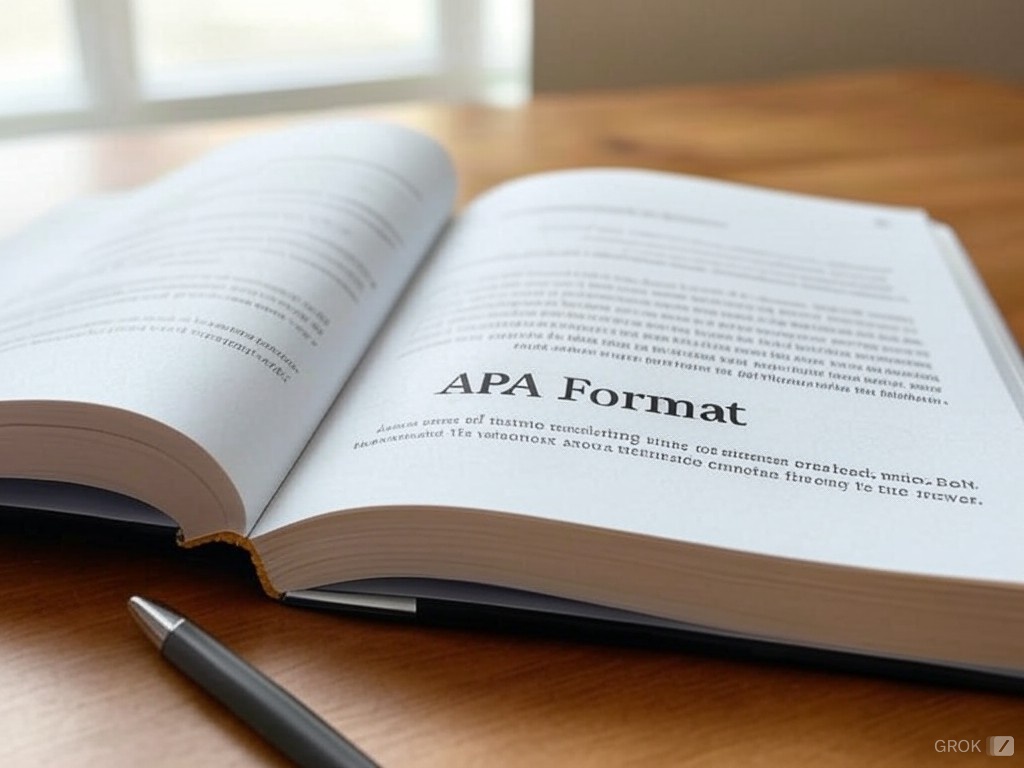What is APA Format? A Complete Guide with Examples

What is APA Format? A Complete Guide with Examples
APA (American Psychological Association) format is one of the most widely used citation styles in academic writing, particularly in the social sciences. Whether you're writing a research paper, thesis, or professional article, understanding APA format is crucial for properly crediting sources and maintaining academic integrity.
This comprehensive guide will walk you through everything you need to know about APA format, from basic page layout to complex citations. We'll provide clear examples and practical tips to help you master this essential academic writing style.
APA format includes specific requirements for page layout, font style and size, margins, spacing, and organization. The current version (APA 7th edition) emphasizes clarity, accessibility, and inclusivity in academic writing.
Key Elements of APA Format
-
Document Setup
- 1-inch margins
- Double-spaced text
- Times New Roman 12pt
- Page numbers (top right)
-
Title Page
- Running head
- Paper title
- Author information
- Institution
-
In-Text Citations
- Author-date format
- Direct quotes
- Paraphrasing rules
Citation Examples
• Single Author: (Smith, 2023)
• Two Authors: (Smith & Jones, 2023)
• Three or More: (Smith et al., 2023)
Reference List Guidelines
-
Basic Format
- Alphabetical order
- Hanging indentation
- Double spacing
-
Common Sources
- Books
- Journal articles
- Websites
- Digital media
-
Special Cases
- Multiple authors
- No date available
- Secondary sources
- Incorrect citation formatting
- Missing reference entries
- Inconsistent formatting
Frequently Asked Questions
APA 7 introduced several changes, including simplified running heads, updated guidelines for citing online sources, and more inclusive language recommendations. It also removed the requirement for publisher location in book references.
For social media posts, include the author's name, their handle in square brackets, the first 20 words of the post, the platform name, and the date. For example: Smith, J. [@johnsmith]. (2023, January 1). This is a tweet about research methods [Tweet]. Twitter.
Yes, cite personal communications (emails, interviews, etc.) in-text only. Include the communicator's initials, last name, and exact date. For example: (J. Smith, personal communication, January 1, 2023). These don't appear in the reference list.
Other Articles You Might Like
Grammarly vs. AI Writing Assistants: Which One is Better for Writers?
A comprehensive comparison of Grammarly and modern AI writing assistants, analyzing their strengths, limitations, and ideal use cases to help writers choose the right tool for their specific needs.
Yomu AI vs. Jenni.ai: Unleashing the Power of AI Writing Assistants
The article compares AI writing assistants Yomu AI and Jenni.ai, concluding that Yomu AI is the superior choice for students and writers due to its comprehensive real-time feedback, grammar/spelling checks, vocabulary enhancement, style customization, collaboration tools, affordability, and multifaceted support catered to academic and creative writing needs. Yomu AI emerges as the clear winner in assisting writers and students excel.
Are AI Writing Assistants the Future of Content Creation?
An in-depth analysis of how AI writing tools are transforming content creation, with expert insights on current capabilities, future developments, and strategies for balancing technological advancement with human creativity.
Preparing for Exams with Yomu AI
This blog post takes readers on an imaginative, story-like journey of preparing for exams with the help of the AI tool Yomu, portraying how it can assist students in crafting vibrant study guides and flashcards, mastering recall abilities, eliminating stress, and emerging triumphant on exam day. The post emphasizes that with Yomu as a steadfast companion, the quest for knowledge is a lifelong, epic adventure filled with growth and discovery.
Affordable AI Writing Assistance: Yomu Cost-Effective Approach to Enhancing Your Writing
Yomu AI is an affordable AI writing assistant that provides real-time feedback to help students improve their writing; it offers powerful features like collaboration tools and multilingual support at the low cost of a pizza delivery to make quality AI writing assistance accessible to students.
Yomu AI Case Studies: Unleashing the Writing Superpowers
The article explores real-life case studies of students and writers using Yomu AI, an AI writing assistant, to improve their skills - from conquering writers block to mastering research papers, Yomu AI empowers users across academic, creative, and professional spheres by providing personalized feedback and suggestions that transform their writing journeys.
